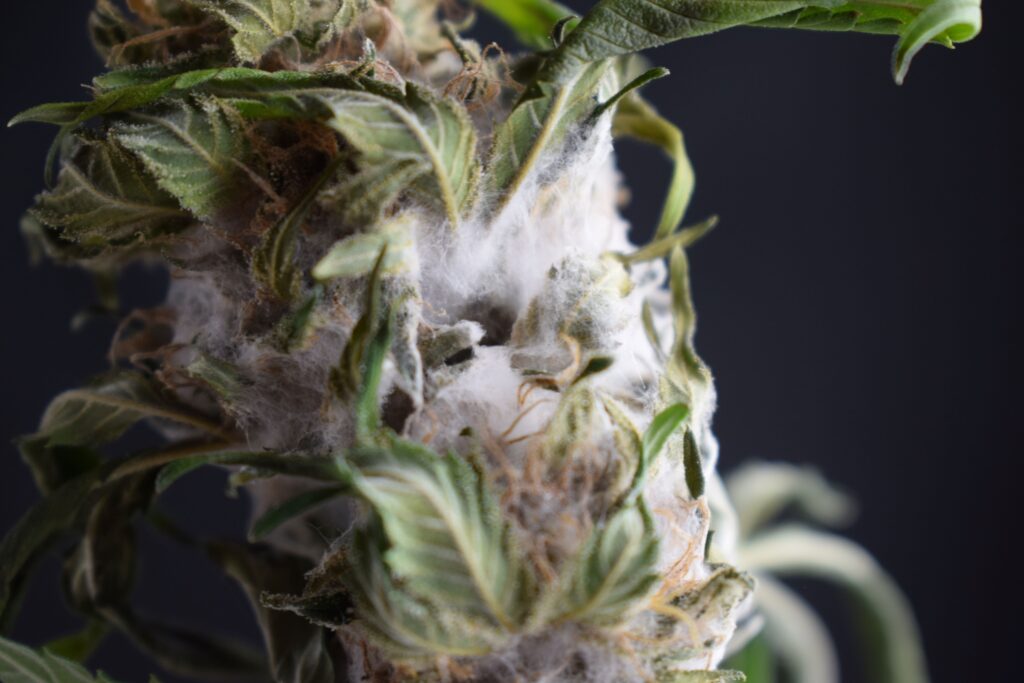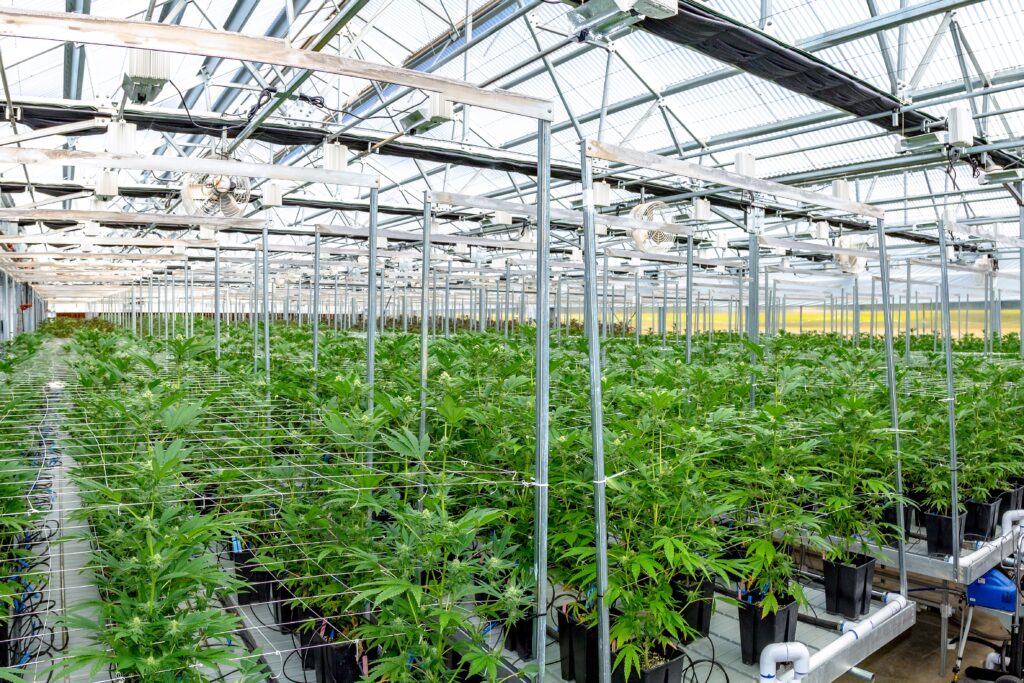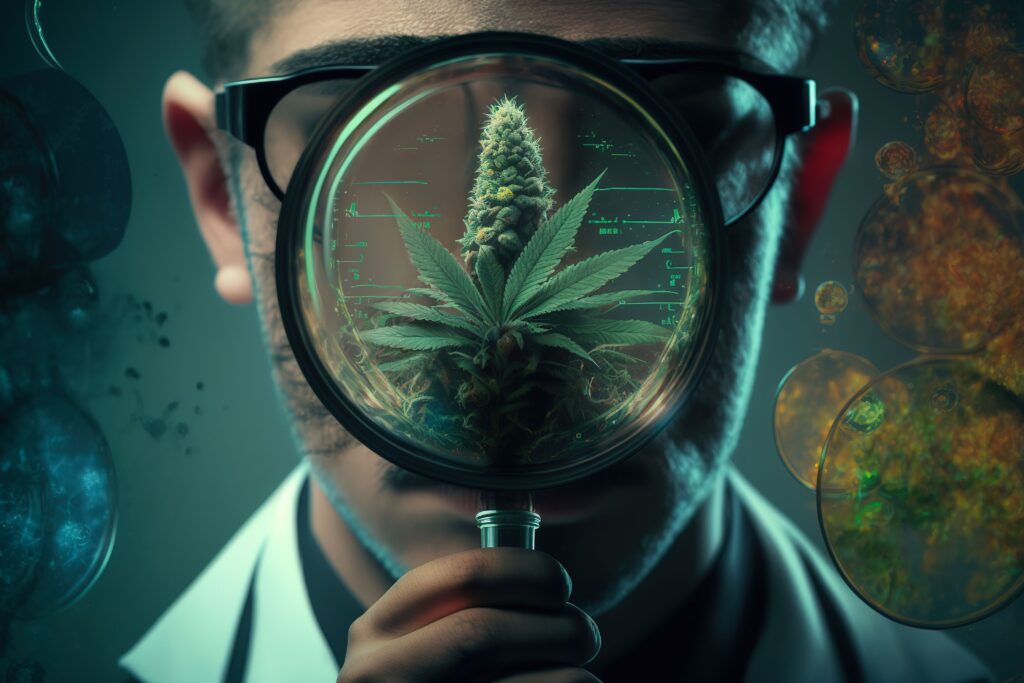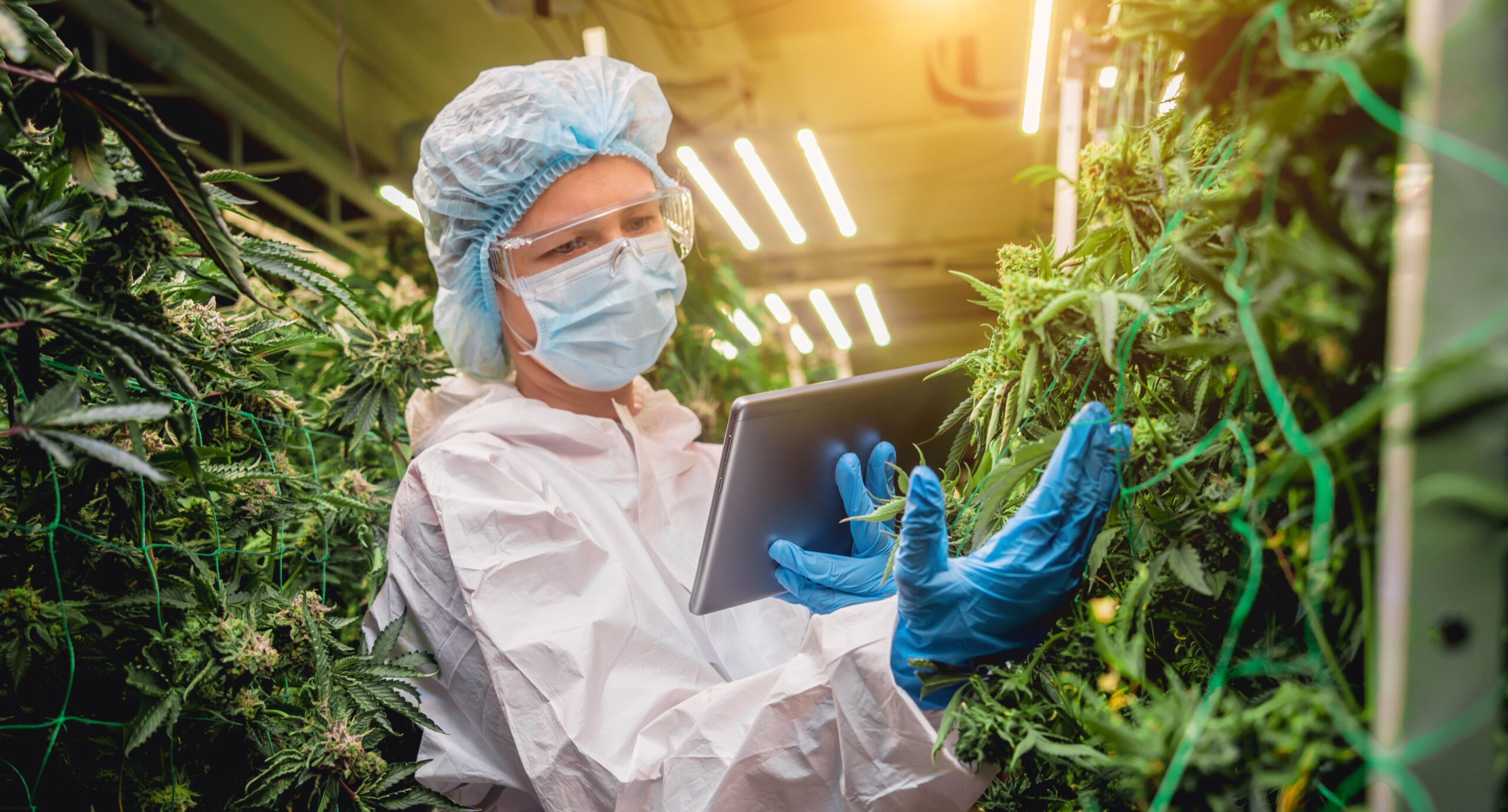Growing cannabis requires a wealth of knowledge about growth stages and plant life cycle. While indoor cannabis cultivation requires similar attention to plant care regarding lighting and nutrients as other plants, it poses a unique challenge. Cannabis cultivation indoors is highly susceptible to mold growth due to uncontrolled humidity. Unfortunately, indoor grow rooms and/or cannabis facilities unable to control humidity levels will experience a higher risk of mold, mildew, and other contaminants in cannabis cultivation that can negatively impact the product.
At Indoor Doctor, we understand firsthand the devastating consequences of mold and its impact on indoor spaces and company production. We help ensure your Cannabis crops are free from toxic mold. We’ve assisted countless manufacturers and distributors in ensuring a healthy indoor environment for their crops. Let’s discuss the types of mold that typically affect cannabis, how they can negatively affect your production if left unchecked, and how we can help you produce quality products free of mold.

Common Molds Found on Cannabis Plants
Cannabis can be successfully grown either indoors or outdoors. However, indoor cultivation can be more challenging due to a lack of air ventilation and consistent dampness. Poor air ventilation and high moisture levels are a recipe for disastrous consequences, especially for plant growers.
For instance, mold is a fungus that thrives in humid, damp environments and can multiply quickly. Unfortunately, when mold develops on cannabis, it can be difficult to remove. It’s best to have good practices in place to prevent infestation. In some cases, mold can be incredibly dangerous, generating mycotoxins or harmful compounds that can cause severe sickness in individuals who ingest it. Some of the most prevalent types of mold found on cannabis plants are:
Botrytis (Gray Mold)
Botrytis, or gray mold, is the most prevalent and notorious fungus that affects cannabis plants. Gray mold can affect outdoor and indoor plants. Yet, plants in uncontrolled high humidity are highly susceptible to this type of fungus. While it most often strikes at the end of a cannabis plant’s flowering cycle, it can also develop near the drying process and rapidly spread to affect the entire crop, resulting in a devastating loss.
Powdery Mildew
White powdery mildew is another common fungus that can strike a cannabis crop due to poor air circulation and high humidity levels. Luckily, it’s simple to spot due to its easily identifiable white, powdery patches that stick to the leaves. This fungus could be eradicated with early detection and proper treatment; however, infected buds should not be used as they may contain spores that can not be seen.
Fusarium
Fusarium fungus is more difficult to detect than other types of mold. Fusarium species are soilborne pathogens that infect the cannabis plant through the root system. This mold wreaks havoc on the plants by causing wilting, yellowing, and stunted growth. Once this fungus infiltrates, it can spread, devastating the entire crop system.

Mold and the Impact on Cannabis Production
Mold is the last thing cannabis growers want to see forming on their crops. Unfortunately, the presence of mold in cannabis cultivation facilities can have devastating consequences, such as health effects for the plants and individuals consuming it. Moreover, the presence of mold can wipe out the entirety of the crop or alter the quality of the final product. Let’s further discuss how mold can impact cannabis production.
Reduced Yields
When mold contaminants multiply in an indoor facility, it can have disastrous effects. Most significantly, mold can reduce yields, ultimately affecting financial health for the business. Mold infestations can infiltrate the root system, stunting the plant’s growth and inhibiting flower growth, and spores can enter buds, making them unsuitable for sale.
Loss of Quality
Mold-contaminated cannabis is never a product that should be sold. Not only can it be harmful to consumers, harboring mycotoxins that can cause serious illness when inhaled or ingested, but it also has unpleasant characteristics. Moldy cannabis is typically unpleasant to smell and taste, reminiscent of a wet basement. This lack in quality will quickly diminish market value and a grower’s reputation.
Compliance Issues
Cannabis growers can avoid mold by implementing proper preventable practices from the start. In regulated cannabis markets, these preventable actions are a must, with strict quality control standards dictating the permissible mold levels and other contaminants in cannabis products. Cannabis growers who fail to follow these guidelines risk failing regulatory testing, resulting in fines, recalls, and damage to the cultivator’s reputation. Consumers can protect themselves by choosing to buy cannabis plants from licensed dispensaries.
Increased Operational Costs
The slightest fluctuations in climate can disrupt indoor cannabis cultivation, leading to mold infestation. Due to this, significant resources, such as specialized equipment and fungicides, are often needed to combat the spread, which can be labor-intensive. Additionally, mold remediation can disrupt production schedules, resulting in financial losses for businesses.
How to Prevent Mold Infestation in Cannabis Cultivation Facilities
Protecting indoor cannabis crops from mold requires a proactive approach involving various methods. The key to preventing mold from infiltrating your cannabis crop is controlling the environment through proper humidity levels, airflow, sanitization, and regular quality assurance testing. Let’s explore further how these preventative actions can help keep your cannabis crop stay mold-free.
Environmental Controls
Rapid changes in humidity can easily affect indoor grow rooms. Uncontrolled temperatures and humidity levels can negatively affect cannabis crops, leading to mold growth, mildew, and other contaminants like pests that are easily attracted to mold. Cannabis cultivators can take precautions by investing in climate control systems, including dehumidifiers and air purification technology that improves airflow and helps reduce mold growth.
Proper Ventilation
One effective way to prevent mold in cannabis cultivation is to use medical-grade air purifiers. Air purifiers such as Austin Air Healthmate and ActivePure systems are considered the gold standard in reducing mold exposure on plants. A lack of indoor air circulation can lead to stagnant air pockets, rapid changes in humidity and CO2, ultimately reducing growth success and producing toxic mold.
Sanitation Protocols
Maintaining proper humidity levels with proper ventilation can drastically help reduce mold growth. However, you can do more to help prevent mold growth with rigorous sanitation protocols. Indoor grow spaces should be regularly cleaned and disinfected to reduce mold contamination risks, including equipment, surfaces, and mediums.
Integrated Pest Management (IPM)
Cannabis growers can utilize integrated pest management (IPM), a combination of holistic methods to manage and prevent mold and pest infestations. IPM encourages growers to use biological controls, such as beneficial insects, that naturally reduce the risk of mold growth. Additionally, IPM promotes healthy indoor growing environments by promoting crop rotation, proper spacing, and optimized irrigation techniques.
Prevention is key in Integrated Pest Management (IPM), which involves observing and preventing pest and mold issues through responsible measures before they occur. This leads to higher-quality yields and reduced environmental impact.

Quality Assurance Mold Testing
As part of their prevention strategy, cannabis growers should implement strict quality assurance protocols throughout the cultivation process, from propagation to harvest, protecting not only their crops but also their consumers. The quality assurance process involves many steps, such as sampling plant materials, testing for mold presence, and complying with standards. Quality assurance mold testing is a critical element in cannabis cultivation to prevent the distribution of mold-contaminated products while protecting consumer health and complying with legal and safety standards.
Prevention is Key to Reducing Mold In Cannabis Production
Mold in indoor cannabis cultivation is a significant threat to the quality and safety of cannabis production. Damp and moist conditions of indoor cultivation create an ideal breeding ground for various molds, including Botrytis, powdery mildew, and Fusarium. These molds not only pose health risks but also affect the financial health of cannabis operations through reduced yields, compromised product quality, and regulatory non-compliance.
Despite mold being difficult to remove, prevention is the best approach. Effective mold management in cannabis production largely depends on understanding the specific fungal threats and implementing a multi-faceted approach to prevention and control.
Among the steps to minimizing mold risk are maintaining optimal environmental conditions, such as controlling humidity and circulating air with medical grade air purifiers such as Austin Air’s Healthmate and ActivePure systems, adhering to rigid sanitation protocols, and implementing Integrated Pest Management (IPM) practices.
Quality assurance mold testing is also critical to this strategy, ensuring that cannabis products are safe for consumption and comply with regulatory standards. Regular testing throughout the cultivation process helps identify and mitigate mold issues early and reinforces the commitment to producing high-quality, mold-free cannabis.
Ultimately, combating mold in indoor cannabis cultivation is an ongoing effort that requires diligence and commitment to the best cannabis growing practices. At Indoor Doctor, we can help you maintain your business in a competitive cannabis market by preventing mold growth and protecting your crops and consumers.
References:
Effects of Mold Exposure on Cannabis Production
Cannabis and Mold: Everything There is to Know




